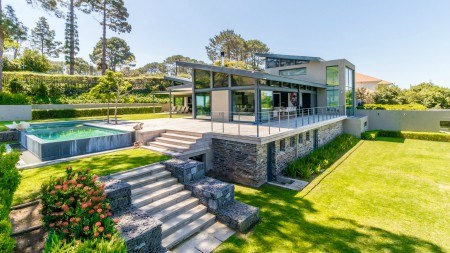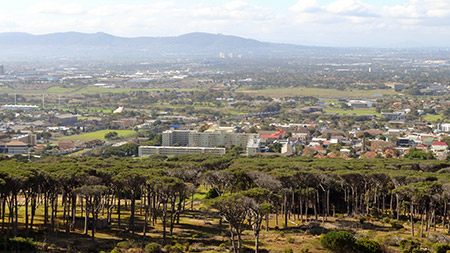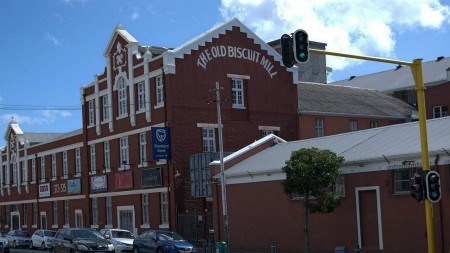Amidst the tough property market in South Africa, certain suburbs in the southern parts of Cape Town are showing extraordinary resilience.
Property values in the Southern Suburbs demonstrated notable resilience last year, even high-end nodes like Bishops Court where the median sale price barely wavered last year.
Predictably, 2018 was another subdued year for the Cape Town real estate market as sales volumes continued to decline, but it was not all doom and gloom as property values remained relatively consistent and several areas, particularly in the south, proved encouragingly resilient.
Property sales
Arnold Maritz, Southern Suburbs co-principal for Lew Geffen Sotheby’s International Realty, says: “An analysis of Propstats data for the Cape Peninsula reveals that although the total number of sales dropped by 27%, from 4712 in 2017 to 3438 in 2018, the average sale price (R3 773 864) was only 0.85% lower than in 2017 (R3 806 196), while the median price increased by 2%, from R2.401m to R2.45m.
“The combined Southern Suburbs, Constantiaberg and False Bay markets fared perceptibly better than the regional average last year with a 23% drop in total unit sales and 2% growth in the average selling price which increased from R3 848 603 to R3 927 146.
“However, not all suburbs fared equally with several nodes holding their own despite the growing pressures of the prevailing socio-economic climate.” says Maritz.
“Unit sales in Plumstead, and Rondebosch in the Southern Suburbs only decreased by 9%, while Harfield Village saw a promising 20% increase in sales. And, although the volume of sales in Constantia dropped by just over 30%, the average sale price in this suburb increased by an impressive 20.7%. In Plumstead, Observatory, Tokai and Rondebosch, average sale prices increased by 15.8%, 13%, 10% and 7.4% respectively.”
The average time properties spent on the market also increased last year, from 53 days in 2017 to 64 days in 2018, with the only areas showing a reduction being False Bay and the South Eastern Suburbs.
Developments
Co-Principal, Claude McKirby says that development sales, however, have slowed across the board, and that those which aren’t competitively priced will remain on the market for a considerable time.
“Development sales normally thrive in a seller’s market which is indicative of strong demand and stock shortages, whereas a buyer’s market is less supportive of this sector as developments are normally priced higher than comparable existing properties.
“And, as we have started to see during the past 12 months, it’s not unusual for developments to be temporarily taken off the market to be re-launched at a later date.”
He adds that the current buyer’s market is, however, a great opportunity for investment buyers who have a wide variety of options at very competitive prices from which to choose.
Property market
Maritz and McKirby, attribute the general slowing of residential sales to a number of key factors, most notably an increasingly cautious investor sentiment in the wake of ongoing political uncertainty, contentious issues like the expropriation bill and the upcoming general elections.
“The outcome of the May elections will significantly impact the property market and determine its course for the foreseeable future.
“Well-run, free and fair elections, and the appointment of a government that is focussed on rooting out corruption, growing the economy and governing for the benefit of all the people will foster an environment for growth and wealth creation in the property sector.
“However, continued uncertainty and the unconstructive implementation of land restitution will have the opposite effect and are likely to further subdue an already beleaguered market to a point from which recovery will be very difficult.”
Rental market
There were also numerous shifts in the rental market in 2018, especially in the short-term sector which was significantly impacted.
“In recent years, many long-term rental properties were converted to the short-term rentals when Air B&B became all the rage, but after the peak summer season early last year, some investment owners realised that certain properties are better suited to long term letting.
“When these were introduced back onto the market as long term rentals, certain segments of the market suddenly had an over-supply of rental stock which affected price growth as tenants were suddenly spoilt for choice. Last year we saw many landlords reduce annual increases significantly in preference of keeping good tenants.”
Commercial property
Maritz says: “In the commercial sector last year, properties were also slower to let but we saw pricier properties go first while older, less utilitarian spaces remained on the market for longer. However, astute landlords who accepted reasonable market related offers generally filled their spaces.
“The commercial development sector fared better than its residential counterpart and many new developments came on line, or commenced in 2018. A good amount of new builds and remodelled/revamped older spaces were also seen last year, especially in key areas like Woodstock, Salt River, Paarden Eiland, Maitland and Observatory.”
Maritz and McKirby conclude: “For a successful sale in the current buyer’s market, sellers need to consider and take cognisance of similar properties in their respective areas and ensure their property is competitively priced compared to competing homes on the market as buyers are spoilt for choice.
“The current market is a great opportunity for investment buyers, however, as they have a lot to choose from and can acquire properties at very competitive prices. However, the current political and economic climate is not conducive to investment and investors remain reluctant to expand their property portfolios.
“While there is fair consensus that a good deal of stability has entered into the governance of the country and its fiduciary entities, we are still dealing with the chaos of the previous administration.
As markets are essentially part-driven by market sentiment, this will also improve with a positive election result and that would be an important kickstart to an upswing in the general economy.





